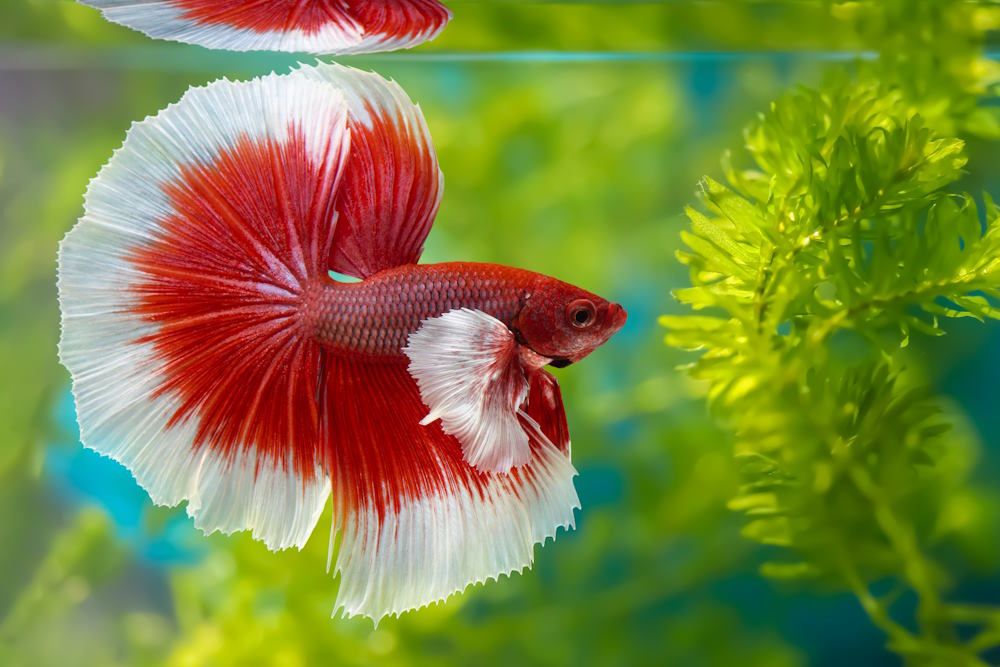How to Present Betta Fish to an Area Container Safely
How to Present Betta Fish to an Area Container Safely
Blog Article
All Concerning Betta Fish: Comprehending Their Special Requirements, Actions, and the very best Practices for Ideal Treatment
Comprehending the one-of-a-kind demands and habits of Betta fish is vital for any aquarist looking to provide ideal treatment. betta fish. As we check out these components better, the ramifications for both newbie and skilled fish caretakers end up being progressively apparent, raising concerns concerning exactly how ideal to suit these impressive fish in our homes.
Betta Fish Overview
Although commonly admired for their lively colors and moving fins, Betta fish, scientifically referred to as Betta splendens, are complex creatures that require specific treatment to prosper. Stemming from Southeast Asia, these freshwater fish are recognized for their territorial nature and one-of-a-kind actions. Betta fish display sex-related dimorphism, with males displaying more vivid shades and longer fins than women.
Their aggressive propensities, especially among men, demand careful consideration when real estate them. Bettas are often maintained in single-specimen tanks to avoid territorial disputes. They can exist together quietly with certain suitable types in larger neighborhood containers, provided the environment satisfies their needs.

To guarantee optimum treatment, aquarists must understand their unique behavioral characteristics, nutritional demands, and habitat needs. betta fish. With proper focus, Betta fish can exhibit their lively characters and grow in a well-kept fish tank setting
All-natural Environment and Setting
Betta fish grow in a diverse variety of all-natural habitats, primarily found in the shallow waters of Southeast Asia, including rice paddies, swamps, and slow-moving streams. These settings are identified by cozy temperature levels, normally between 75 ° F and 82 ° F(24 ° C and 28 ° C ), and a pH degree ranging from 6.5 to 7.5, which is excellent for their wellness and health.
In their natural surroundings, Betta fish are accustomed to dense plant life, offering both shelter and breeding premises. The presence of plants such as floating water lilies and thick lawns not just provides defense from killers however additionally adds to the oxygenation of the water, which is crucial for their respiratory system demands. In addition, these environments usually have areas of still water, permitting Betta fish to show their natural actions such as bubble nesting.
Recognizing the natural environment of Betta fish is crucial for fish tank enthusiasts. Duplicating these conditions-- via water temperature, pH equilibrium, and the incorporation of live plants-- can significantly boost the overall wellness and longevity of these captivating fish, guaranteeing they flourish in a home aquarium setup.
Social Habits and Interactions
Understanding the social behavior and interactions of Betta fish is important for effective aquarium monitoring. Betta fish, or Siamese battling fish, are understood for their one-of-a-kind behavioral traits, defined mostly by territoriality and aggressiveness.
On the other hand, female Bettas show less hostile actions and can coexist in groups, recognized as sororities, if presented appropriately. However, it is crucial to monitor their communications carefully, as power structure and dominance can bring about problems. Recognizing the dynamics within a Betta area is vital; establishing concealing areas and making certain enough space can alleviate aggressiveness.
In addition, Betta fish may likewise show curiosity and social habits in the direction of other species. While they can coexist with certain see this page non-aggressive storage tank friends, it is vital to pick suitable varieties to avoid anxiety and aggressiveness. On the whole, identifying these social interactions is vital to promoting a harmonious fish tank environment for Betta fish.
Essential Treatment Standards
Supplying proper treatment for Betta fish is important to their health and health. Regular water changes-- approximately find 25% regular-- assistance keep water quality.
Betta fish require an ideal container size; a minimum of 5 gallons is suggested to supply ample room for swimming and hiding. Consist of decors and plants to develop a stimulating atmosphere, but stay clear of sharp things that could damage their fragile fins.

Last but not least, make certain the storage tank is equipped with a filter to maintain the water clean, yet use a mild filter to stay clear of strong currents that can stress the fish. By adhering to these necessary care standards, owners can promote a healthy and balanced and vivid Betta fish.
Common Health Issues and Solutions
In the treatment of Betta fish, understanding of common health and wellness issues is essential why not find out more for keeping their wellness. One widespread issue is fin rot, frequently caused by poor water top quality or microbial infection. Symptoms consist of frayed or tarnished fins. To deal with fin rot, boost water problems and think about utilizing a broad-spectrum antibiotic.
An additional usual condition is ich, a parasitical infection identified by white areas on the fish's body (betta fish). Therapy involves enhancing water temperature and adding aquarium salt to the container, as this can aid get rid of the parasite
Swim bladder condition is additionally frequently observed, causing buoyancy troubles. This problem may occur from overfeeding or irregularity. A fasting duration of 24-48 hours, complied with by a diet regimen of blanched peas, can supply relief.
Finally, bettas might experience velour illness, indicated by a gold dust-like appearance on their skin. Treatment generally requires medicine particularly designed for external bloodsuckers, together with boosted storage tank health.
Routine monitoring of water criteria, preserving a clean setting, and providing a balanced diet regimen are vital safety nets. By resolving these health problems quickly, Betta fish can lead healthier, a lot more vivid lives.
Verdict
In recap, successful betta fish treatment requires an understanding of their one-of-a-kind demands and actions. Routine surveillance of health and water high quality, along with a well balanced diet plan, contributes to the long life and vibrancy of betta fish.
Report this page